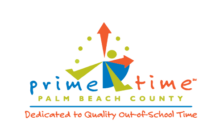9:00 am - 11:00 am
Over the last 5 years, Prime Time has helped the JASE program become a successful afterschool program in Martin County. We are thankful for the variety of trainings offered, yearly actions plans and multiple site visits.
Afterschool ProfessionalMartin County Parks and Recreation
Cooperative Learning: Basics – VIRTUAL
Do the youth in your program have opportunities to work together in groups so they can teach and learn from one another? Cooperative learning is an excellent way to nurture youth leadership, build community and keep things fun. This dynamic training will equip you with grouping strategies and ways to think about building cooperative learning into any program offering.
Upon successful completion of this training, the participant will earn 2 clock hours (.2 CEUs) of training.
Training Objectives
Participants will:
- Define Cooperative Learning.
- Utilize a variety of group forming strategies (Group Formers) and group work structures (Group Structures).
- Explain through peer to peer and whole group discussion how Cooperative Learning helps to meet the social and intellectual needs of youth.
- Discuss how to apply four complementary strategies to engineer successful Cooperative Learning structures.
Core Knowledge, Skills, and Competencies Addressed (CKSCs)
Learning Environment and Curriculum:
Physical Environment and Activities:
Identify – A. Recognizes the importance of creating a developmentally and culturally responsive learning environment and following a curriculum.
Identify – B. Understands how children and youth learn through relationships, activities, play, and other experiences.
Identify – C. Identifies aspects of a developmentally and culturally responsive environment and learning plan.
Apply – D. Creates engaging, physically, emotionally safe, and inclusive environments to encourage play, exploration, and learning across developmental domains.
Physical, Social/Emotional, and Cognitive Development
Identify – C. Understands how children and youth develop a sense of self.
Relationships and Interactions with Children and Youth:
Apply – A. Provides a supportive environment in which children and youth can learn and practice pro-social behaviors.
Enhancing Group Experiences
Identify – A. Recognizes the impact of group dynamics on learning and development and that working with groups is different from working with individuals.
Identify – D. Identifies child/youth abilities and corresponding positive guidance techniques to support successful group experiences.
Apply – G. Utilizes group management strategies based on theories of child and youth development.
Youth Engagement, Voice, and Choice:
Identify – A. Understands that young people’s voices are valuable.
Primary QIS Scales Addressed
I. Safe Environment
I-E. Creating Safe Spaces
II. Supportive Environment
II-H. Scaffolding Learning
II-J. Active Learning
III. Interactive Environment
III-L. Fostering Teamwork
III-M. Promoting Responsibility and Leadership

